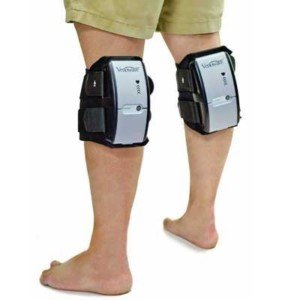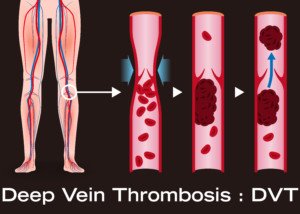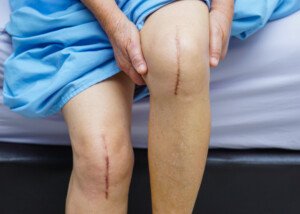
DVT (blood clot) prevention after joint replacement surgery can be done with a portable compression device that straps onto the legs.
The standard of care following joint replacement surgery is to send the patient home with a prescription to take a powerful blood thinner drug to prevent the development of a DVT: deep vein thrombosis.
Sometimes the surgeon will instruct the patient to take only aspirin.
Whether the patient takes a prescription blood thinner (Coumadin) or aspirin depends on the surgeon’s viewpoint on these two drugs as well as the patient’s medical history and other unique factors.
However, there is a third way to help prevent post-op blood clots following joint replacement surgery.
Portable (Mobile) Compression Device
The Shiley Center for Orthopaedic Research and Education at Scripps Clinic has conducted research and the report is in a 2015 issue of Journal of Bone and Joint Surgery.
The conclusion of the study is that a portable, strap-on compression device is just as effective as blood thinners in the prevention of a DVT.
The patient can easily walk around with the device on (walking would be limited by the joint replacement surgery itself, however, as the patient heals from the operation).
The device can be used by patients at their home for 10 days, or even longer, following joint replacement surgery—in place of a blood thinner, to stave off a blood clot formation.
Patients should inquire about this device to their surgeons prior to the operation.
Blood Thinners vs. Compression Device
“The risk of bleeding with blood thinners has to be weighed against its benefit in preventing blood clots,” says Dr. Paramjit “Romi” Chopra, MD, founder of the Midwest Institute for Minimally Invasive Therapies (MIMIT), an interventional radiology and endovascular therapy practice.
“Long-term use of blood thinners is not recommended if patients are mobile and at lower risk of DVT once they resume their usual level of activity.
“Lower extremity compression devices, including portable sequential compression devices and even compression stockings, can reduce the risk of DVT.
“They may be a better option in patients at higher risk for bleeding, such has patients with history of GI bleeding.”



























